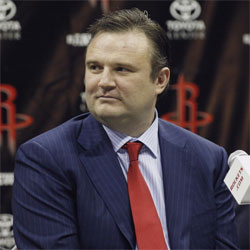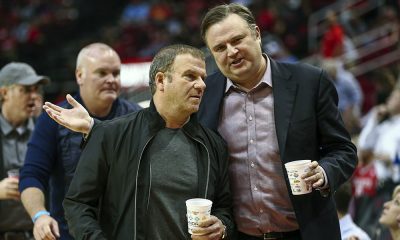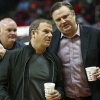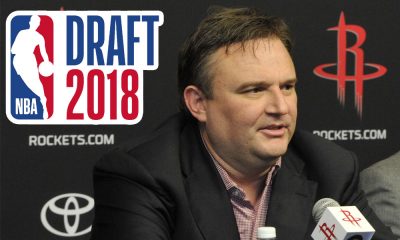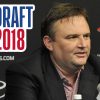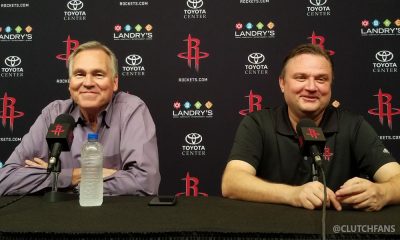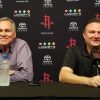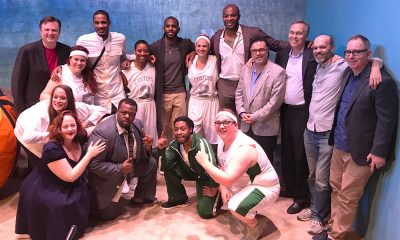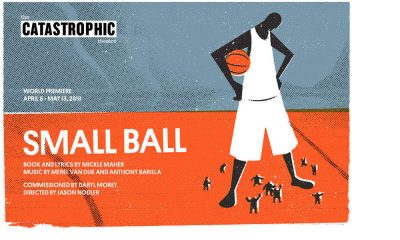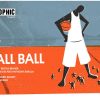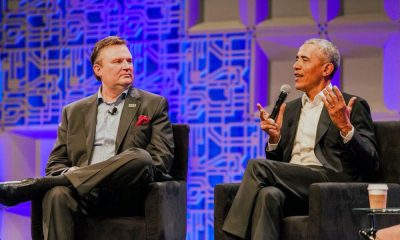Houston Rockets
Houston Rockets Salary Cap Update: 2013 Training Camp Edition
David Weiner breaks down the Rockets’ new salary cap reality and ways they can still improve the team.
Published
12 years agoon
What a difference a year makes.
At this time last year, the Houston Rockets sported a young roster long on trade assets but short on star talent. The marquee name on the roster was the recently-acquired Jeremy Lin (whose track record consisted of a few short weeks of “Lin-sanity” and not much else), and the roster was otherwise headed by the likes of Kevin Martin (scorer extraordinaire and “everything else” not-so-extraordinaire), Chandler Parsons (a solid second round pick with “quality role player” potential) and new starting center Omer Asik (he of the 3.1 point-per-game average the prior season in Chicago). Add in a slew of young power forwards, including one (Royce White) making news for not showing up to training camp, and the Rockets weren’t exactly looking like playoff contenders, let alone title contenders.
Then, everything changed.
Rockets GM Daryl Morey pulled off a blockbuster trade with Oklahoma City for James Harden (cashing in several of those aforementioned trade assets) and immediately signed Harden to a five-year maximum salary extension (by no means a “no-brainer” to all at the time but an educated gamble on Harden’s upside). Morey and the Rockets were rewarded for their faith in Harden, as he put together an All-Star season and repeatedly flashed the offensive talents that will keep him in the All-Star Game for years to come. Parsons continued to exceed expectations and established himself as a young player on the rise with potential to become far more than just a role player. Asik also surpassed all expectations, averaging a double-double and providing the Rockets’ defense with the anchor it so badly needed. Lin, after a rough start while trying to recover from off-season knee surgery, gradually improved and played at a high level during the final few months of the season.
Add all that up, and the Rockets–with one superstar already in tow and the salary cap flexibility that Morey and his staff worked so hard to maintain–established themselves as a desirable free agent destination for other star players.
After a recruiting effort the likes of which has never been seen in Houston pro sports history, the Rockets successfully landed Dwight Howard to continue the franchise’s long line of dominant centers.
With the Rockets now sporting two superstars and legitimate title hopes for the first time since those two weeks when both Tracy McGrady and Yao Ming were healthy way back when, let’s take a look at the team’s current salary cap situation.
The Rockets’ Latest Moves
Since my last update, the Rockets have made the following roster moves (which include updated details from my last blog post on July maneuvers):
- Traded Thomas Robinson to the Portland Trailblazers in exchange for the draft rights to Kostas Papanikolaou (regarded by many as a first round talent) and Marko Todorovic, a 2015 second round pick being the lesser of Minnesota’s or Denver’s, and essentially Portland’s 2017 second round pick.
- Dumped… er, traded Royce White, the draft rights to Furkan Aldemir and enough cash to cover White’s 2013-14 salary to Sam Hinkie and the Philadelphia 76ers for a 2014 second round pick (not-so-shockingly, that pick is top-55 protected and has pretty much zero chance of amounting to anything).
- Renounced the rights to free agents Francisco Garcia ($9.15 million cap hold) and Earl Boykins ($884,293 cap hold).
- Waived James Anderson and Tim Ohlbrecht, both of whom were claimed off waivers by Hinkie and the 76ers.
- Signed that Howard guy to a four-year, $87.6 million deal with a player option in Year 4. You may have heard about the signing.
- With respect to the three remaining incomplete roster charges, Houston used an equivalent amount of room ($490,180) to sign each of Robert Covington, B.J. Young and Jordan Henriquez to three-year contracts, each starting at the rookie minimum. Covington’s deal is reportedly fully guaranteed in Year 1 and partially guaranteed in Year 2 for $150,000; Young’s deal has a $40,000 partial guarantee in Year 1; and Henriquez’s deal is totally non-guaranteed.
- Signed 2013 second round draft pick Isaiah Canaan to a three-year deal using every last penny of cap room remaining after the Howard signing. Canaan’s deal pays him $570,515 in Year 1 (paying the league minimum thereafter), is fully guaranteed in Years 1 and 2, and is 80% guaranteed in Year 3.
- Signed Omri Casspi to a two-year league minimum deal. Year 1 is fully guaranteed; Year 2 is non-guaranteed if Casspi is waived by August 5, 2014.
- Signed Reggie Williams to a two-year league minimum deal. Year 1 is 50% guaranteed (until January 10, 2014); Year 2 is non-guaranteed if Williams is waived by September 1, 2014.
- Re-signed Garcia to a two-year, fully guaranteed league minimum deal, with a (gulp!) player option for Year 2. The player option was presumably to reward Garcia for not demanding that the team use its Room Exception to re-sign him. The Rockets will have full Bird rights to Garcia after this season if he does not exercise his player option; and, as a player playing on a (potential) one-year deal who could lose his Bird rights if traded, Garcia possesses the right to veto any trade involving him this season.
- Re-signed Aaron Brooks to a one-year, fully guaranteed league minimum deal. Brooks will be paid $1,027,424 this season. However, as a veteran with more than two years of service playing on a one-year deal, the Rockets will only pay Brooks–and he will only count against the cap for–the two-year veteran’s minimum ($884,293). The NBA will pick up the rest of the tab. Also, the Rockets will have Early Bird rights to Brooks after this season; and, just like Garcia, Brooks has the right to veto any trade involving him this season.
- Signed Marcus Camby to a one-year, fully guaranteed league minimum deal. Camby will be paid $1,399,507 this season. However, as with Brooks, the Rockets’ payment and cap hit for Camby will only be $884,293, with the league picking up the rest.
- Signed Ronnie Brewer to a two-year league minimum deal. Year 1 is partially guaranteed for $100,000, and Year 2 is presumably non-guaranteed (with the guarantee date not yet known).
Salary Commitments and Available Cap Room
(All salaries and contract information courtesy of ShamSports.com.)
The short answer here is that the Rockets do not currently have any remaining cap room this season and are unlikely to have much (if any) cap room this season or next (unless a trade involving either Lin or Asik is made that brings back little to no salary, an unlikely proposition).
Barring any further roster moves (which we will see as players are cut and the team finalizes the 15-man roster), and with the maximum team salary cap set this season at $58.679 million, the Houston Rockets now have nearly $64.8 million in team salary committed for the 2013-14 season: Howard ($20.51 million), Harden ($13.70 million), Lin ($8.37 million cap hit), Asik ($8.37 million cap hit), Terrence Jones ($1.55 million), Donatas Motiejunas ($1.42 million), Garcia ($1,265,977), Brewer ($1,186,459, partially guaranteed), Casspi ($947,907), Williams ($947,907, partially guaranteed), Parsons ($926,250), Camby ($884,293 cap hit), Brooks ($884,293 cap hit), Greg Smith ($884,293, non-guaranteed), Patrick Beverley ($788,872, non-guaranteed), Canaan ($570,515), Covington ($490,180), Young ($490,180, partially guaranteed), Henriquez ($490,180, non-guaranteed), and Tyler Honeycutt (waived – $100,000 partial guarantee).
Note that the Rockets were able to exceed the salary cap to sign Garcia, Brewer, Casspi, Williams, Camby and Brooks, in each case using the Minimum Player Salary Exception. Remarkably, Morey and company have been able to assemble this roster without dipping into their Room Exception.
The Rockets are well below the luxury tax threshold and should be able to acquire additional salary this season (within the salary cap rules) without fear of the new punitive tax (which now starts at 150% and escalates quickly).
The Room Exception
There is one type of Mid-Level Exception (MLE)–commonly referred to as the Room Exception–available to teams that get below the salary cap and subsequently use most or all of that room. This salary cap exception rewards those teams able to manage their cap situations effectively. Under the prior CBA, only teams operating above the cap (and which did not open up any cap room that season) were entitled to use the MLE.
The amount of the Room Exception for the 2013-14 season is $2.652 million; and teams using the Room Exception can sign players to contracts up to two years in length (with a 4.5% raise for Year 2). Starting on January 10, the MLE (all types) begins to reduce in value by 1/170th (there are 170 days in the NBA regular season). Unlike the veteran’s minimum salary (which prorates from the beginning of the regular season), the MLE allows a team to provide a disproportionately larger salary to players if signed in the middle of the season.
Given the sheer number of players under contract this summer (19 out of the maximum 20 allowed) and the need to cut down to 15 players by the start of the regular season, it is unlikely that the Rockets will add a player with the Room Exception this month. However, expect Morey to keep close tabs on the top remaining free agents and any talented players waived or released by their teams during the season. For instance, if a team fails to dump salary by the February trade deadline and subsequently negotiates a buyout with a solid veteran, the Rockets could use the Room Exception to sign such player on March 1 for a starting salary of $1,887,600 (compared to a prorated amount of less than 28% of the veteran’s minimum salary with teams over the cap and/or seeking to mitigate luxury tax payments).
To play on a contending Rockets club featuring Harden and Howard, almost any of the top available players will have to strongly consider Houston as a destination come February or March.
Cap Consequences Immaterial to Roster Decisions
Due to the Rockets’ aforementioned cap situation (being above the cap, with no expectation of having much cap room through the 2014-15 season), it is not expected that salary cap consequences will play much of a factor in trimming the roster from the current 19 players in camp down to the required 15-man maximum by the start of the regular season. Other than Howard, Harden, Asik and Lin, Houston has no real cap reason (irrespective of talent) to keep any of its players on the roster over any other.
Unlike in years past–such as in 2011, when Jonny Flynn was kept on the roster over Lin and Hasheem Thabeet made the team over Smith–the Rockets will not be hamstrung by the need to preserve/optimize salary cap flexibility in making its roster decisions. In 2011, the Rockets were primarily motivated to keep Flynn and Thabeet (both of whom had mid- to large-sized expiring salaries) on the roster in order to facilitate–for salary-matching purposes–a major trade for that star player Houston so desperately needed. (Flynn and Thabeet ended up being packaged at the February 2012 trade deadline for Camby, a valuable rotation piece who helped the Rockets nearly make the playoffs.)
The following is a list of the amounts of guaranteed salary that would be owed to each Rockets player in camp (other than the Howard/Harden/Asik/Lin quartet) if that player were to be cut prior to the start of the regular season:
Garcia – $2,582,786 (including $1,316,809 after this season)
Canaan – $2,144,818 (including $1,574,303 after this season)
Jones – $1,551,840
Motiejunas – $1,422,720
Casspi – $947,907
Parsons – $926,500
Brooks – $884,293
Camby – $884,293
Covington – $640,180 (including $150,000 after this season)
Williams – $473,954
Brewer – $100,000
Young – $40,000
Smith – $0
Beverley – $0
Henriquez – $0
Cutting any of these players would not materially impact the Rockets’ cap situation. Of these players, only Garcia, Canaan and Covington would even count against the cap beyond this season. (If the Rockets so elected, the portions of Garcia’s and Covington’s salaries owed after this season could be stretched over 3 seasons, and the portion of Canaan’s salary owed after this season could be stretched over 5 seasons.) Obviously, there is no way the Rockets would cut a key rotation piece like Parsons or Beverley; but talent aside, there is little financial reason to keep any of these 15 players over any other.
The result of all this is that the Rockets’ front office and coaching staff are liberated, in a sense, in making the roster decisions that will most greatly benefit the organization and the team on the floor, for this season and beyond.
Conclusion
From “rag-tag band of young kids and trade assets” to “title contender with two superstars,” the Houston Rockets have undergone a remarkable transformation over the past year. What makes this transformation even better is that the Rockets still sport all of their future first round picks, several additional future second round picks from other teams, and the rights to at least two players currently playing overseas (Sergio Llull and Papanikolaou) who could potentially be rotation pieces. The Rockets also have the ability to offer free agents the full Non-Taxpayer MLE next summer (for up to four years, $22.65 million) if they choose not to wait to use the potentially significant cap room they could have in 2015.
Add it all up, and the Houston Rockets are primed to contend for the next several seasons.
Houston Rockets
Looking Back on the Trade for Phoenix’s Draft Picks
Are the Rockets set to cash in on Phoenix’s downfall or could a Suns retool murky the waters?
Published
4 months agoon
March 12, 2025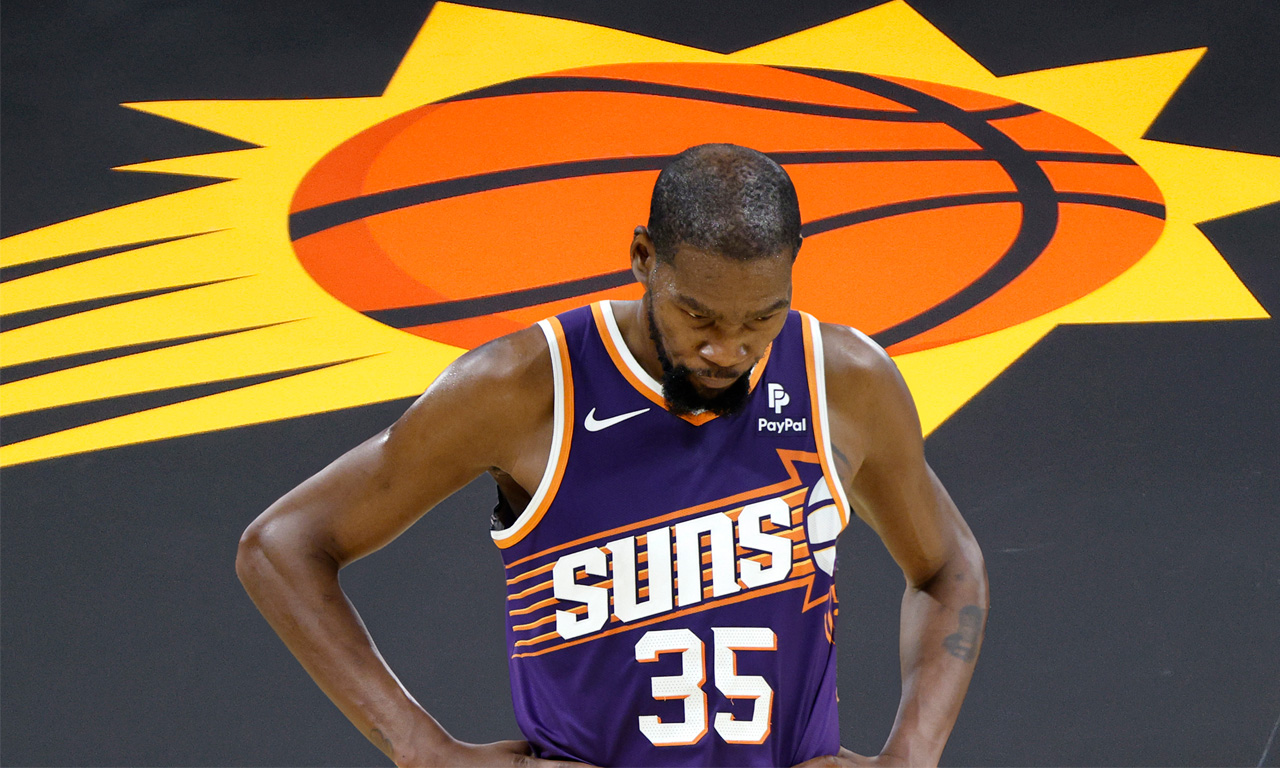
As the Houston Rockets set to host the Phoenix Suns tonight, it seems the right time to take a look back at the trade that linked these two franchises together for the foreseeable future.
This past June, the Rockets made a trade with Brooklyn that sent back to the Nets control of their 2025 and 2026 unprotected first-round picks. In exchange, the Rockets received a large chunk of Phoenix’s future (2025, 2027, 2029) and control of the Dallas Mavericks’ 2029 first.
In essence, the Rockets traded one pick and one swap for two picks and two swaps. All unprotected.
Thoughts At The Time of the Trade
If I’m going to discuss the current outlook of this trade, I have to be honest about how I saw it at the time of the move. While I didn’t hate this trade initially, I definitely didn’t love it either.
I liked that the Rockets increased their overall trade assets. I also liked that they extended the timeline to be able to make a bigger trade and I also appreciated that they kept control of the 2027 Brooklyn swap.
But I didn’t like that the Rockets gave up what seemed like the more established value (Brooklyn) for a more uncertain gamble (Phoenix). The Rockets did not control a “tanking runway” of picks to offer back to Phoenix — all of the picks Houston got in the deal were in staggered years (’25, ’27, ’29). I also felt Brooklyn, who badly needed to rebuild, got away with paying market value to get their picks back despite the fact that the Rockets invested years in watching those picks appreciate up to the point that they had the Nets completely over a barrel.
Net-net: I felt like more certainty was traded for less certainty and it was more of an equitable trade for both teams rather than Brooklyn paying dearly to get back the things only the Rockets could offer.
There were two ways I thought this trade could pay dividends: The Suns needed to flame out immediately, as in this season (unlikely), or the Rockets could trade all those pick assets as part of a deal for a real superstar in the next 12-18 months (more likely).
In a testament to how quickly change can occur in a very unpredictable NBA, four things have happened that have been positive indicators for the Rockets in making this move.
The Suns are fading
While Phoenix had major salary cap issues, dealing with the second apron, they didn’t appear to have problems on the court. They jumped out of the gate 8-1 and looked like a legitimate contender behind their star trio of scorers in Kevin Durant, Devin Booker and Bradley Beal.
Given Houston controlled Phoenix’s pick this year via a swap, it looked like the Rockets would come up empty-handed on the trade this season.
That changed quickly.
Injuries, serious depth concerns and a lack of a defensive identity has sent Phoenix spiraling. Booker’s availability has been inconsistent, forcing Durant to carry the load, while Beal has not quite fit in at all. Their financial limitations, thanks to owner Mat Ishbia’s all-in spending spree, have handcuffed their ability to improve the roster around the three stars.
The Suns are sitting 11th in the West, having gone 22-34 since that hot start, and are currently trying to catch a depleted Dallas squad to get back into the play-in picture.
As of right now, the Rockets project to end up with a lottery pick (albeit a late one) this season out of the trade.
Phoenix was caught shopping Durant
Because the Suns struggled so hard after the start, they tried to make a major move at the deadline but could not unload Beal, in large part due to his no-trade clause.
As a result, they may have made a misstep: They openly tried to trade Durant, which inevitably became public news.
Now? Durant will almost assuredly be traded this summer — likely to a destination that he handpicks. This means the Phoenix Suns will have to look at all possibilities for their future, including potentially having to give Rafael Stone and the Rockets front office a call.
But keep in mind, the Rockets can not offer Phoenix the ability to completely rebuild via the draft right now. Phoenix’s 2026 pick is controlled by Washington. They would have to get extremely creative to set that stage. A retool in Phoenix is much more likely.
Could Brooklyn have been better than expected?
This one is tougher to gauge.
The Brooklyn Nets are currently tied for fifth-worst team in the league, giving them strong lottery odds this summer. This was expected. After all, the Nets, even with a healthy Mikal Bridges and a full roster, were not a good team last season, closing the year 20-41 in the final three quarters of the season. The Rockets ended up with the #3 pick (Reed Sheppard) as a result of Brooklyn’s mediocrity.
However, if the Rockets had not placed that pick back in Brooklyn’s hands, would the Nets be better than this?
Brooklyn brought in a new coach in Jordi Fernandez that has had a positive impact. They have dumped off players, such as Dennis Schroeder and Dorian Finney-Smith, that impacted winning. The bar to make the play-in in the East (.415 winning percentage) is obscenely low, with Brooklyn being just five wins away from it at the moment.
And on top of that, Brooklyn did have lots of draft capital that they could have moved to try to win now.
It’s very tough to say as you don’t know if a team with Bridges still in Brooklyn might have actually been worse than this current squad, but you could make a case that the pick the Rockets would have ended up with from Brooklyn this season would be eerily similar to the one they will end up getting from Phoenix this year.
Again, this is a tough call.
Nico Harrison Hooked the Rockets Up
As part of the trade, the Rockets got control of the Dallas Mavericks’ 2029 first-round pick (unprotected, of course). While there’s really no way of knowing what a pick will be five years out, we did know that Luka Doncic would be just 29-30 years old that season and it was fairly etched in stone that he would be the core piece of a Dallas squad that season.
Enter chaos in Dallas.
Doncic was shipped out in the trade that shocked the world, which could have a major impact on the Rockets. Dallas’ current core of Kyrie Irving and Anthony Davis will be 37 and 36 years old that season, respectively.
On paper, the value of that pick shot up.
Final Summary
Right now, the outlook on these picks looks strong. One source stated off the record that they feel the 2029 Phoenix pick is the best pick asset out there that is owned by another team. The Rockets would be reluctant to add that one specifically into any trade unless it’s for a truly legitimate star.
But if there is any lesson that the NBA teaches us over and over again, it’s that it’s very hard to predict where a team will be a year from now, much less three years from now.
Can the Rockets pressure Phoenix and leverage the ownership they have of their draft capital to get what they really want (Booker) from them? Could a Suns retool around Booker and Beal, with the right pieces and assets acquired from a Durant trade, significantly change their on-court outlook and cap sheet — which in turn could damage the value of the picks Houston controls?
Bottom line is it has worked out well this season, and the future forecast at the moment is promising. The current value of those future picks appears strong. What will likely determine history’s final grade for this trade will be how it sets them up for the trade to come, and that’s where fans will be looking to Stone and the front office for action starting this summer.
Houston Rockets
Amen Thompson’s ankle injury will be re-evaluated in one week
“The things he does you can’t replicate,” says Rockets coach Ime Udoka
Published
4 months agoon
March 10, 2025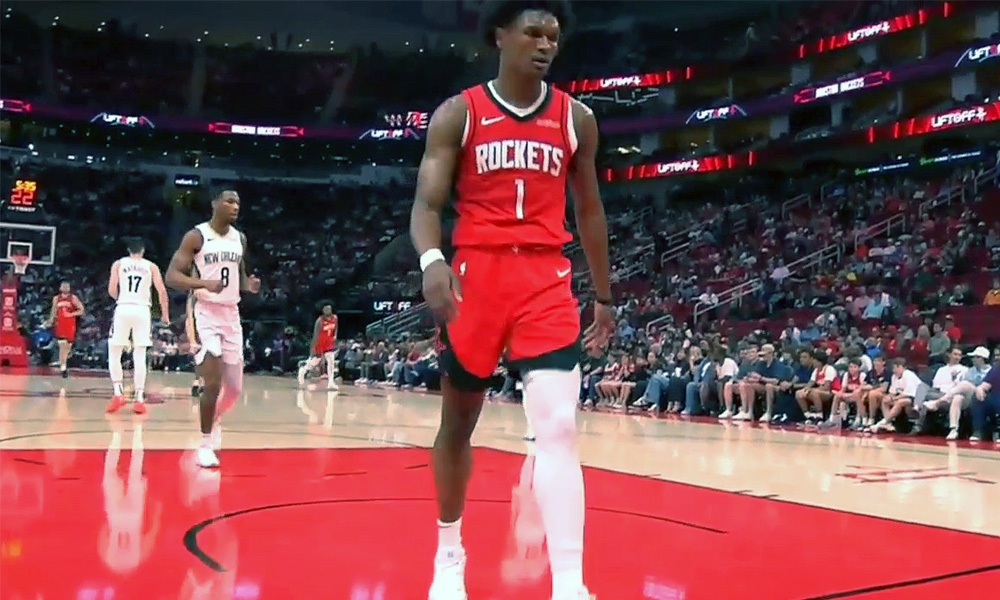
Rockets young star Amen Thompson will have his ankle injury re-evaluated in one week, according to Ime Udoka.
Thompson had an MRI on Sunday and the Rockets coach confirmed all imaging (X-ray, MRI) was negative.
“Just some swelling and pain, obviously,” said Udoka.
If you listen to Udoka, you can tell he knows how special Amen is to this team. He said the Rockets are missing a lot by not having him out there.
“Obviously, the things he does you can’t replicate,” said Udoka. “[Amen is] a guy that plays every position for us. When one goes down, he runs the point. If another is out, he runs the four.”
Amen is one of the best defensive players in the game, and as a one-on-one defender of guards/wings, he might already be the best in the league in just his second season. He’s holding his opponents to 40.5% shooting from the field, tops in the league.
“He’s a very unique defensive player,” said Udoka. “We got some guys that do some great things there, but I like to put him and Dillon on the best two usually, night to night. You got Tari and that’s a luxury as well, but the way he goes about it is different. His athleticism, size, speed, strength, shotblocking ability, steals… he’s all over the place.”
“Hard to replicate for sure.”
Amen injured his ankle late Saturday night in a blowout win against the Pelicans, but the unfortunate part was he probably should not have been on the floor in the first place.
The Rockets left Amen Thompson in the game in a blowout to get one more rebound for a triple-double and he just got injured. He's heading to the locker room with a limp. https://t.co/UBtrEpgWuU pic.twitter.com/D8GeKP8sQk
— ClutchFans (@clutchfans) March 9, 2025
The Rockets had built well over a 30-point lead by early fourth quarter. Jalen Green was able to rest the entire fourth. Alperen Sengun came out of the game with 7-8 minutes left while Dillon Brooks and Tari Eason came out with 6:00 left. But Thompson, who had posted an insane +39 on-off number, remained in the game because he was one rebound shy of a triple-double with 15 points, 11 assists and nine rebounds.
Udoka addressed that decision on Monday before the game against Orlando.
“What I typically don’t do is wholesale substitutions,” said Udoka of the decision to keep Amen in the game. “Albeit 30[-point lead] at six minutes [left] is different than losing to Minnesota, a 16-point lead with four minutes [left].”
“I’ve seen it go both ways in the past. You take out guys too early and have to bring starters back, and vice versa.”
Thompson has played in 60 games this season, five short of being eligible for postseason awards. He absolutely should be up for an All-Defensive nod this season so keep an eye on him getting back in time for that. He would need to return to action no later than April 4th for the game against the OKC Thunder in order to play enough games to be eligible.
Houston Rockets
How the Kyrie Irving Injury Impacts Rockets
Houston’s draft positioning and offseason plans could be impacted by Dallas
Published
4 months agoon
March 4, 2025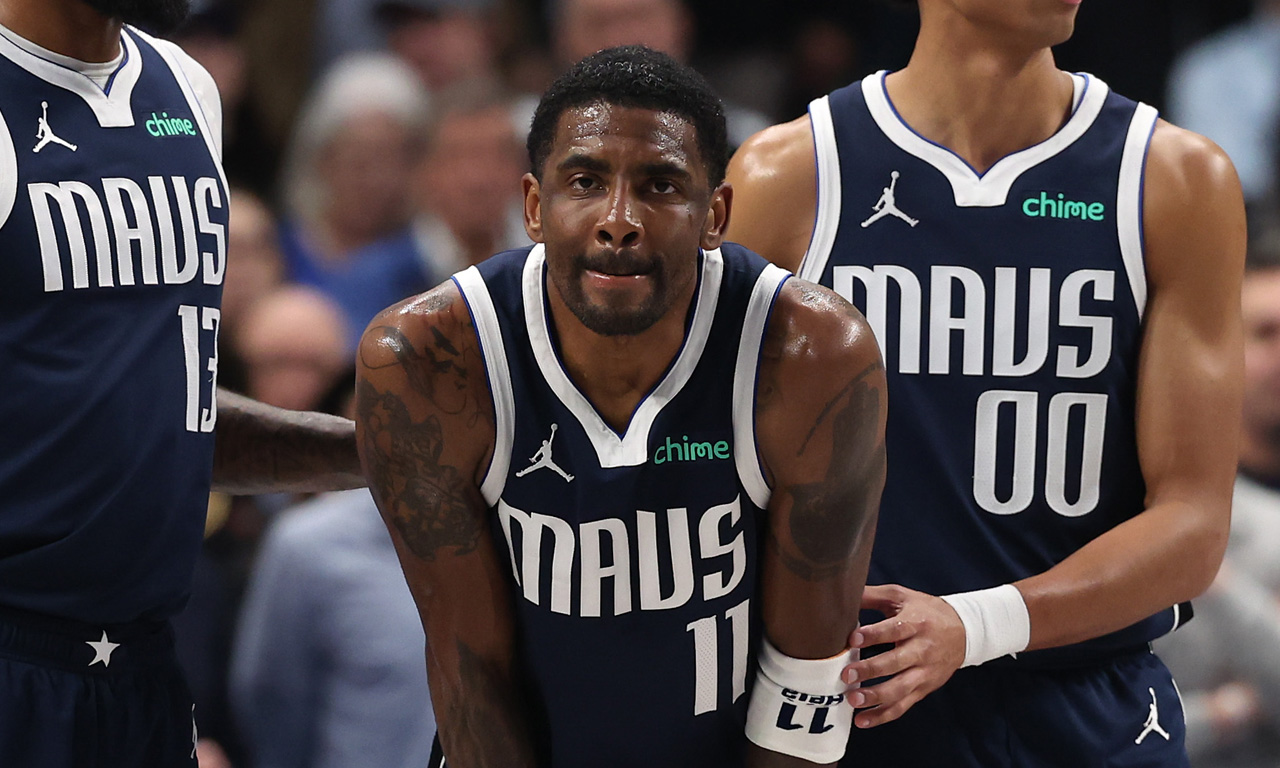
Dallas Mavericks guard Kyrie Irving was injured Monday night and the news dropped on Tuesday that the knee injury is serious — a torn ACL in his left knee that will end his season and a good portion of next season as well.
Brutal. I can’t think of an NBA team that imploded faster than the Dallas Mavericks.
You trade away a 25-year-old phenom who just hoisted you on his back en route to the NBA Finals a year ago. You cashed in that golden ticket to go all-in on a trio of aging stars in Kyrie, Anthony Davis, and Klay Thompson.
Bold strategy, Nico. Let’s see if it pays off.
(Narrator: It’s not paying off.)
The Mavericks had some interesting potential this year and maybe the next couple of years once everyone was healthy, but now? Their star guard is likely out until the calendar year 2026 and Klay and AD aren’t getting any younger nor more durable. The Mavericks may have actually swapped their future for a present that never arrives — and Dallas GM Nico Harrison has to be feeling overwhelming pressure right now.
So how does this impact the Rockets?
For starters, Houston has a game remaining on the schedule against Dallas on March 14th at Toyota Center — Davis may or may not be back for that game.
More importantly, Dallas is the 10th seed in the West at the moment, just 3.5 games ahead of the Phoenix Suns (11th seed). The Rockets control Phoenix’s first-round pick unprotected this season via a swap. We need as many West teams as possible ahead of Phoenix to keep them out of the play-in/playoffs and to push them as deep into the lotto as possible.
This complicates that. Phoenix’s remaining schedule is the toughest in the NBA by a good margin, with plenty of games left against the league’s best teams, so it still looks promising overall — but we’re talking about Kevin Durant, Devin Booker and Bradley Beal. They can still get hot at the right time while Dallas may struggle.
So keep a close eye on that. The good news is the Portland Trail Blazers are one of the hottest teams in the league and they are (shockingly) nipping at the Arizona squad’s heels.
Taking a look ahead to the offseason, the Kevin Durant Pursuit will be big.
This one is a little more complicated for Houston. The Rockets really want Devin Booker but, as of now, the Phoenix plan appears to be to trade KD this offseason and retool around Booker. The Rockets will have interest in Durant but they’re not going to sell the farm (prospects and all the picks) for a 37-year old like they would for Booker.
Three teams that I’ve heard a lot about from Rockets circles that will be in the mix are Houston, Minnesota and Dallas — Timberwolves and Mavericks have been considered the main competition. But, a lot of this will depend on Durant himself and where he wants to play at this stage of his career.
Keep in mind also, if the Suns are “retooling” around Booker and Beal (holding the no-trade clause), then they could be placing a higher priority on win-now players over the return of their own draft assets. The Rockets definitely have the best assets overall to offer up in any trade package between those three teams, but if Phoenix does prefer finding the right ready-to-win players around Booker/Beal, that gives Dallas and Minnesota a real chance.
This injury “may” take Dallas out of the equation, and they are/were definitely a contender for KD’s services given his past relationship with Kyrie and the way Dallas was positioned to win right now. Does KD at his age want to wait for Kyrie to be healthy?
And one last friendly reminder: The Rockets control that Dallas 2029 first (unprotected).
Houston Rockets
Rockets Sign David Roddy to Two-Way Contract
Former first-round pick has played with the Grizzlies, Suns and Hawks
Published
4 months agoon
March 3, 2025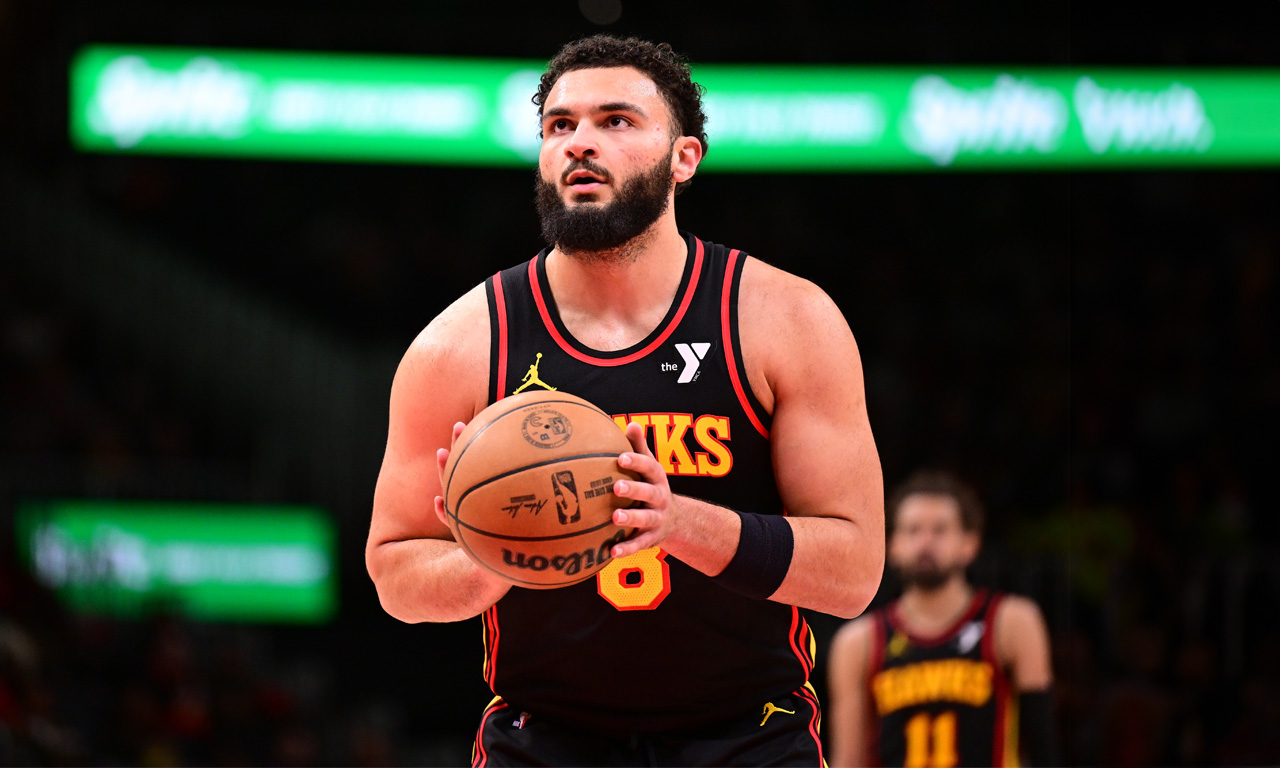
The Rockets made a move on Monday, signing former first-round pick David Roddy to a two-way contract.
The two-way spot opened up after the front office signed Jeenathan Williams to a standard four-year, $8.2 million contract (with friendly team options all along the way).
Roddy is 6-foot-5 and 250+ pounds but sports a 6-foot-11 wingspan. He was taken with the 23rd pick in the first round of the 2022 NBA Draft — six selections after the Rockets drafted Tari Eason. A standout in college, Roddy averaged 19.2 points, 7.5 rebounds, 2.9 assists, 1.2 steals, and 1.1 blocks per game during his junior season at Colorado State.
Roddy, who turns 24 later this month, is a physical player who can play multiple positions. He’s a solid rebounder for his size/position. He has played in 165 games over three seasons with the Grizzlies, Suns, Hawks and most recently Sixers, averaging 6.2 points and 2.9 rebounds per game.
The guard/forward has not shown efficient shooting, however — he’s a career 30.5% three-point shooter and just 68.4% from the line. His defense is better inside than out.
Ultimately, it will be those two things — three-point shooting and defense — that will determine his chances of carving out a consistent role in the league.
All in all, it’s a low-risk signing and the Rockets get a look at a prospect that fits their age timeline.
Houston Rockets
Houston a potential landing spot for Ben Simmons post-buyout?
Published
5 months agoon
February 6, 2025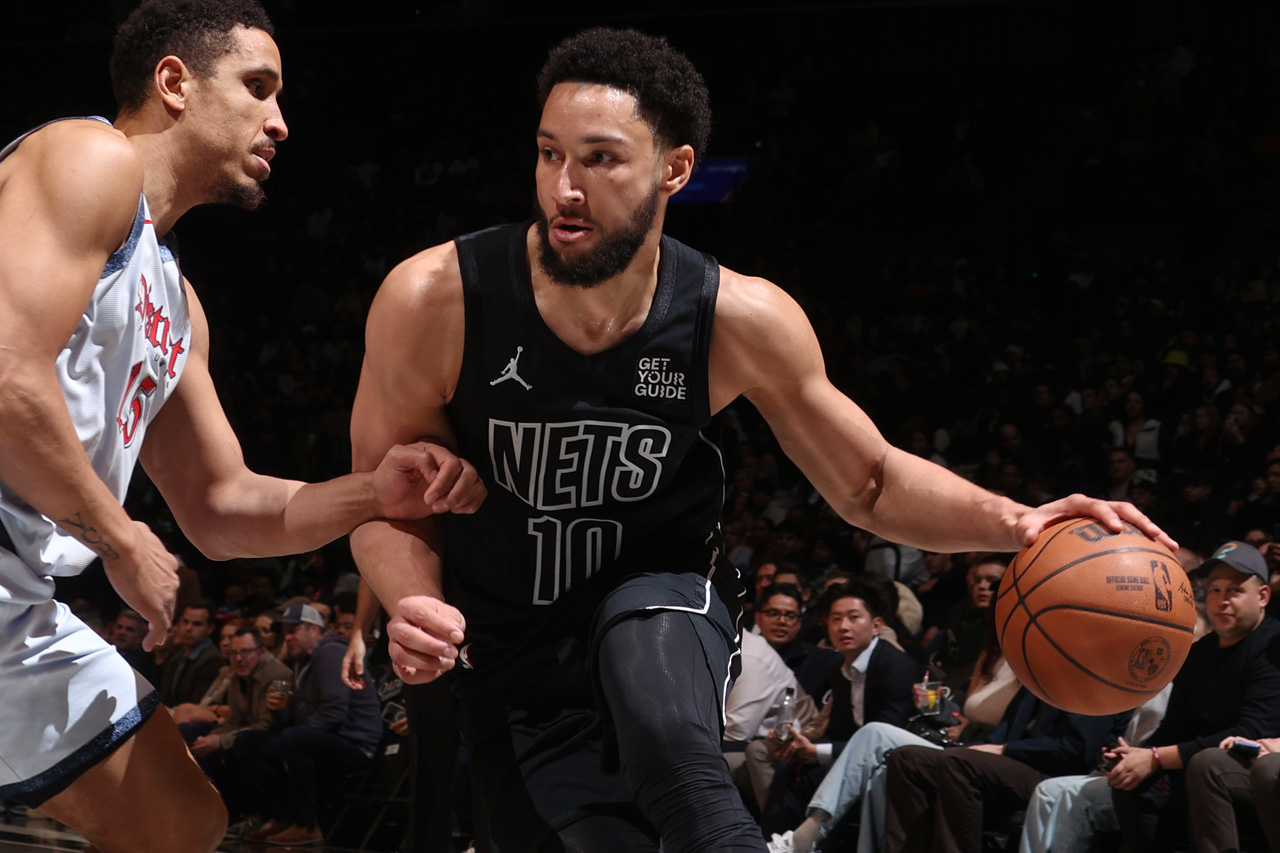
ESPN NBA analyst Brian Windhorst said on Thursday’s NBA Trade Deadline show that Brooklyn Nets forward Ben Simmons is working on a buyout and the Houston Rockets is a potential landing spot for him.
“Cleveland and Houston are two situations for Ben Simmons,” said Windhorst.
Brian Windhorst says the Cavaliers and Rockets are buyout locations for Ben Simmons.
Thoughts? pic.twitter.com/7ly4mvmxr5
— ClutchFans (@clutchfans) February 6, 2025
Advertisement
Rockets coach Ime Udoka was an assistant coach in Philadelphia in 2019-20 when Simmons was with the Sixers, before injuries took a significant toll. In fact, Udoka, when speaking about Amen Thompson earlier this season, brought up some comparisons to Simmons.
“The skill set is there, and it’s something that’s unique with his speed, athleticism, size, passing ability, and all those things,” said Udoka of Thompson. “I coached somebody, Ben Simmons, who had similar traits… as far as size and ability to push the pace, and find guys and finish. There are some similarities there.”
Both Thompson and Simmons are known for their elite athleticism, defensive versatility, and ability to create opportunities in transition.
However, can Simmons help the Rockets today? That’s the tough question.
Simmons has played in 33 games this season, averaging 6.2 points, 6.9 assists, 5.2 rebounds, 0.8 steals and 0.5 blocks in 25 minutes a night. He does not shoot threes (like, at all) — he has only attempted two threes in the past three seasons combined.
Ideally, he does not play in front of your young forwards of Amen, Tari Eason and Jabari Smith Jr. and on that basis alone, I think I would pass. But, Ime loves defensive dogs and he could use some extra ballhandling on the roster. You can see that there’s little in the way of offensive organization when Fred VanVleet is out.
There would be a comical full circle moment though if the Rockets did sign Ben Simmons, considering the Rockets were heavily criticized for trading James Harden in 2021 to Brooklyn instead of to Philadelphia for Simmons. The Rockets clearly made the right choice there.


